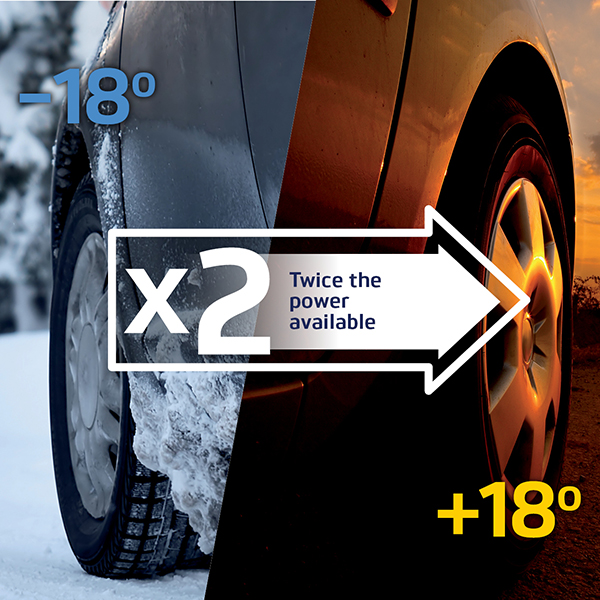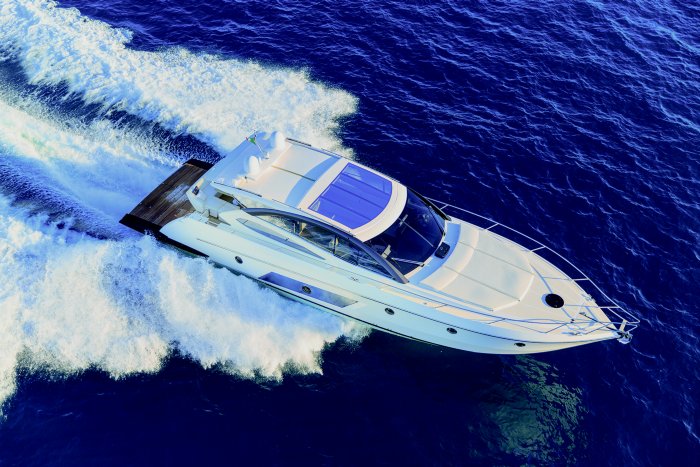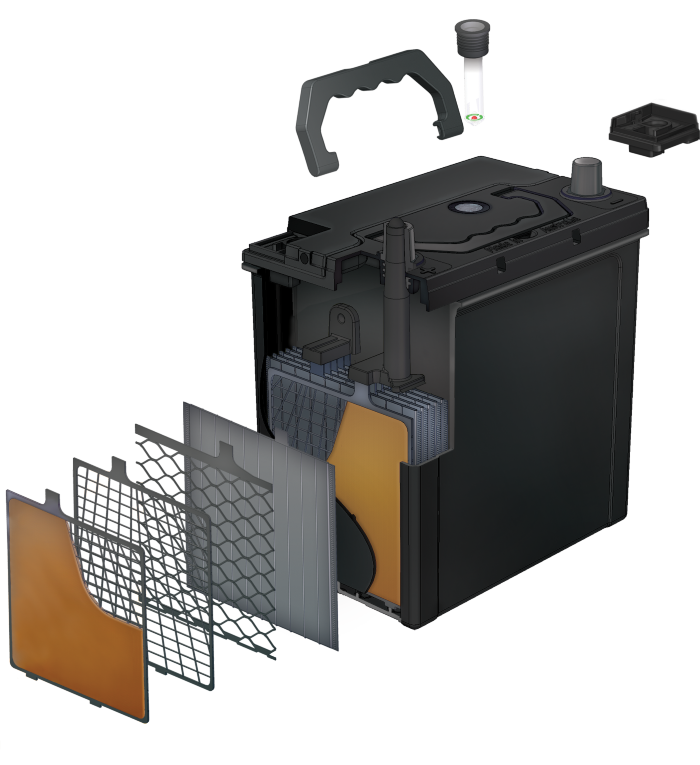
Batteries are rated according to a range of specifications and standards. Understanding these ratings and their relevance to the battery’s application and operating conditions is key to selecting the right battery
CCA (Cold Cranking Amperes)
CCA is the most popular industry rating and is a measurement of the current a fully charged battery can deliver for 30 seconds and maintain a voltage of 7.2 volts (12 volt battery) at a temperature of -18°C. CCA’s are important, but they are not the best measure for warmer climates. They are the ratings used by the battery industry to define a new battery’s ability to start an engine in extremely cold temperatures.

MCA (Marine Cranking Amperes)
Similar to CCA, MCA is a measurement of the current a fully charged battery can deliver for 30 seconds and maintain a voltage of 7.2 volts (12 volt battery) at a temperature of 0°C. It is a more relevant method for rating batteries in warmer or marine conditions where -18°C (Freezing) temperatures are rarely encountered. MCA ratings are 20 – 25% higher than CCA ratings.
CA (Cranking Amperes)
Some manufacturers may rate the battery according to a CA (Cranking Amps) standard. This test is conducted at the same temperature as the MCA rating and should not be confused with CCA (Cold Cranking Amps). When comparing battery ratings it is important to compare like for like. Always ensure the CCA rating is compared against CCA, CA rating against CA and MCA rating against MCA.
RC (Reserve Capacity)
RC refers to the length of time in minutes, that a battery at 25°C can deliver a current of 25 Amps until the voltage drops to 10.50V (12 volt battery). 25 Amps represents a typical electrical load on a car under normal running conditions. RC provides an indication of the time that a vehicle with a normal electrical load will run for if the charging system (alternator) fails.
Ah (Ampere-Hour)
Ah rate refers to the battery’s storage capacity and is the current a fully charged battery will deliver over a specific period before the voltage falls to 10.50V at 25°C. This capacity decreases as the rate of discharge increases. For example a battery rated at 120Ah @ 20hr will deliver 6 Amps for 20 hours. If the same battery was discharged at 20 Amps instead of 6 Amps, the battery would only last approximately 5 hours.
HCA (Hot Cranking Amperes)
HCA is a measurement of the current a fully charged battery can deliver for 30 seconds and maintain a voltage of 7.2 volts (12 volt battery) at a temperature of 27°C. HCA is a rating specifically geared towards starting applications in warm conditions as the warmer the temperature the more available power from the battery. The HCA rating is not an official definition accepted by the industry.
PHCA (Pulse Hot Cranking Amperes)
PHCA is a measurement of the current a fully charged battery can deliver for 5 seconds and maintain a voltage of 7.2 volts (12 volt battery) at a temperature of 27°C. PHCA ratings can be seen on batteries designed for the motor racing industry. The 5 second cranking duration represents the average to start the engine, with the added benefits of the battery being smaller in size and lighter in weight. The PHCA rating is not an official definition accepted by the industry
CCA vs Life - How much do you really need?
The cranking current required to start an engine varies from vehicle to vehicle and is dependent on the engine size, circuit resistance, temperature, engine oil viscosity and the accessory loads. A four cylinder engine may require as much cranking current as an eight cylinder engine because it may need to crank faster to start.
For many years now cold cranking amperes (CCA) has been widely used as a bench marking measurement to compare batteries. The assumption is “the higher the CCA the better it is and the longer it will last.” Consequently many manufacturers have designed batteries to provide excessively high CCA’s at the expense of other important design features.
Higher CCA’s can be achieved through the addition of more battery plates; at the detriment of plate thickness and separator quality. In colder climates more plates and higher CCA’s excel, however in hotter climates the ability to combat corrosion and water loss is just as important as cranking capacity.
A perfect balance between CCA and service life, Century Batteries feature specialist internal components and advanced design features to combat the causes of battery failure and deliver what motorists really want - longer life and superior performance.

If CCA is not the number one factor in choosing a battery, what is?
Modern vehicles are becoming increasingly complex, placing extra demands on a battery’s performance. Optional electrical accessories, regenerative braking technology and advanced engine management systems, all place extra loads on the battery. If these requirements are not factored into the design and manufacturing process, they can lead to premature battery failure. Don’t be misled by high CCA ratings. Always consider the battery’s design features and internal components to ensure they are better suited to the vehicles requirements and operating conditions.
TRUE - In warm climates, chemical reaction rates increase and the available power from the battery is higher. A battery at -18°C delivers half the power of the same battery at 18°C.
FALSE - It is important to note that although a battery may feature an Ah rating, it does not imply suitability for cyclic use. Repeated deep discharge of a standard starting battery will damage the internal components and lead to premature failure. Deep Cycle batteries are designed to withstand repeated cycling and should only be recommended for cycling applications.
For more information contact your Century Yuasa representative on 1300 362 287 (Australia) or 0800 93 93 93 (New Zealand). Alternatively, visit our website www.cyb.com.au or www.cyb.co.nz